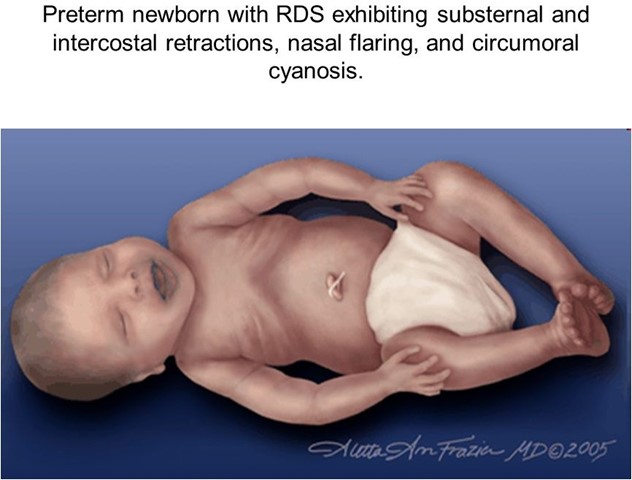The practical nurse (PN) receives shift report for four newborns in the full-term newborn nursery. Which infant should the PN assess first?
The ten-hour-old with circumoral cyanosis.
The one-day-old with a positive Babinski's reflex.
The two-day old with negative Ortolani's sign.
The six-hour-old with a large sacral "stork bite".
The Correct Answer is A
Circumoral cyanosis is a bluish discoloration around the mouth that indicates inadequate oxygenation. It is an abnormal finding in a full-term newborn and requires immediate assessment and intervention by the PN.

The other options are not correct because:
B. A positive Babinski's reflex is a normal finding in newborns that indicates intact neurological function. It is elicited by stroking the sole of the foot and observing the fanning of the toes.
C. A negative Ortolani's sign is a normal finding in newborns that indicates no hip dislocation or dysplasia. It is elicited by abducting the hips and feeling for any clicking or clunking sensation.
D. A large sacral "stork bite" is a common benign birthmark that appears as a reddish patch on the lower back or nape of the neck. It usually fades within the first year of life and does not require any treatment.
Nursing Test Bank
Naxlex Comprehensive Predictor Exams
Related Questions
Correct Answer is B
Explanation
Ask the client to describe what happened.
Calling the agency-based client advocate (Choice A) should not be the first action taken in this situation. While involving an advocate might be necessary at some point, it is more appropriate to address the client's concerns and gather information about the incident first.
Completing a client adverse incident report (Choice C) is an important step to document theevent and any potential issues, but it should not be the first action taken. Before completing the report, the nurse needs to understand the situation from the client's perspective.
Informing the charge nurse of the situation (Choice D) is a reasonable step, but it should not be the first action. It may be necessary to escalate the issue, but understanding the situation from the client's viewpoint should be prioritized.
Correct Answer is C
Explanation
The correct answer is Choice C:
Gather the procedure tray and equipment. Choice A rationale:
Placing the client in an orthopneic position (sitting upright and leaning forward) is not necessary for a thoracentesis procedure. The position may be uncomfortable for the client and does not facilitate the procedure.
Choice B rationale:
Keeping the client NPO (nothing by mouth) and encouraging them to void before the procedure is not directly relevant to a thoracentesis. NPO status might be indicated for other procedures requiring anesthesia but not for a bedside thoracentesis.
Choice C rationale:
This is the correct choice. The PN should prepare by gathering the procedure tray and equipment before the healthcare provider arrives to perform the thoracentesis. This ensures that all necessary items are readily available for the procedure.
Choice D rationale:
Cleansing the site and covering it with a sterile towel is a task usually performed by the healthcare provider who will be performing the thoracentesis. The PN's role is to prepare the necessary equipment and assist the provider during the procedure.
Whether you are a student looking to ace your exams or a practicing nurse seeking to enhance your expertise , our nursing education contents will empower you with the confidence and competence to make a difference in the lives of patients and become a respected leader in the healthcare field.
Visit Naxlex, invest in your future and unlock endless possibilities with our unparalleled nursing education contents today
Report Wrong Answer on the Current Question
Do you disagree with the answer? If yes, what is your expected answer? Explain.
Kindly be descriptive with the issue you are facing.
